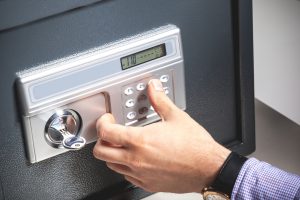When figuring out where to store a gun safe, most people only consider locations that are advantageous to fight off the intruder if they are at home. However, many burglaries occur when no one is there, making an easy-to-find safe a prime target for a home invader. That’s why you might want to consider putting your gun safe in a spot they might not be able to find. This guide on how to hide your gun safe from potential intruders will help you achieve just that.
Find an Obscure Location
The simplest way to hide a gun safe is to put it in a location where a burglar wouldn’t expect to find it. Crawl spaces and garages are two of the most popular options, but they both come with a few caveats. To start, crawl spaces are usually tough to get into and move stuff around in due to their size. While that’s great for keeping intruders out, it’ll also be a problem for you if you need to access the safe often.
On the other hand, garages are much easier to access. However, even though a criminal is much less likely to find your safe in there, if they do, it’ll be insanely easy for them to get to, since your garage won’t be as secure as the rest of your house. Plus, if you live in a cold environment, your guns will be subjugated to the elements. Fortunately, you can take specific steps to protect them from freezing temperatures and humidity.
Even though both of these options have very noticeable downsides, they can be quite effective when combined with the other tips in this guide on how to hide your gun safe from potential intruders.
Hide It Somewhere Clever
No matter where you put your safe, leaving it out in the open will make it much more likely to get broken into, which is why you should do your best to hide it. Home intruders are usually in a rush, so if you obscure it from plain sight, they are likely to miss it.
A perfect example is to hide it in your closet. Even though skilled burglars will open it and look inside, they typically don’t rummage through it too much, which is why you should hide your safe behind your clothes and shoe racks. If done well enough, no one will be able to tell what hidden treasures are behind what looks like ordinary closet items. Of course, you can do this in other locations around the house with different sets of objects as well.
Disguise It as Something Else
If you want to take it a step further, you can fully disguise your gun safe as something else. Some common examples include large cabinets, coffee tables, or even a classic floor safe. Just be sure that whatever you put it into is secured on all sides. A locked door means nothing if the home invader can simply cut a hole into the back of it.
If you’re able to pull off a combination of all three of these methods, we’re sure any possible intruders won’t stand a chance of finding your stash of guns.




